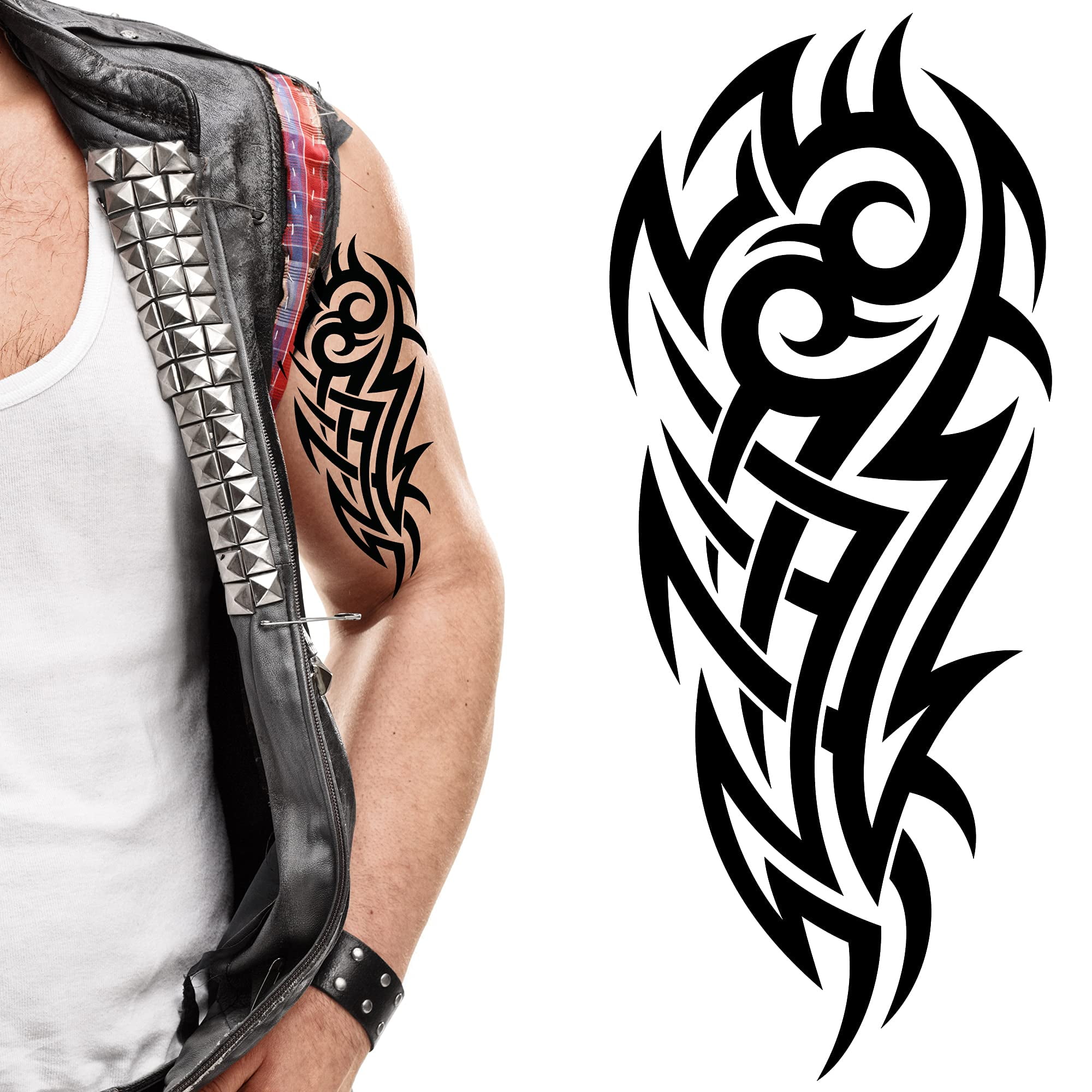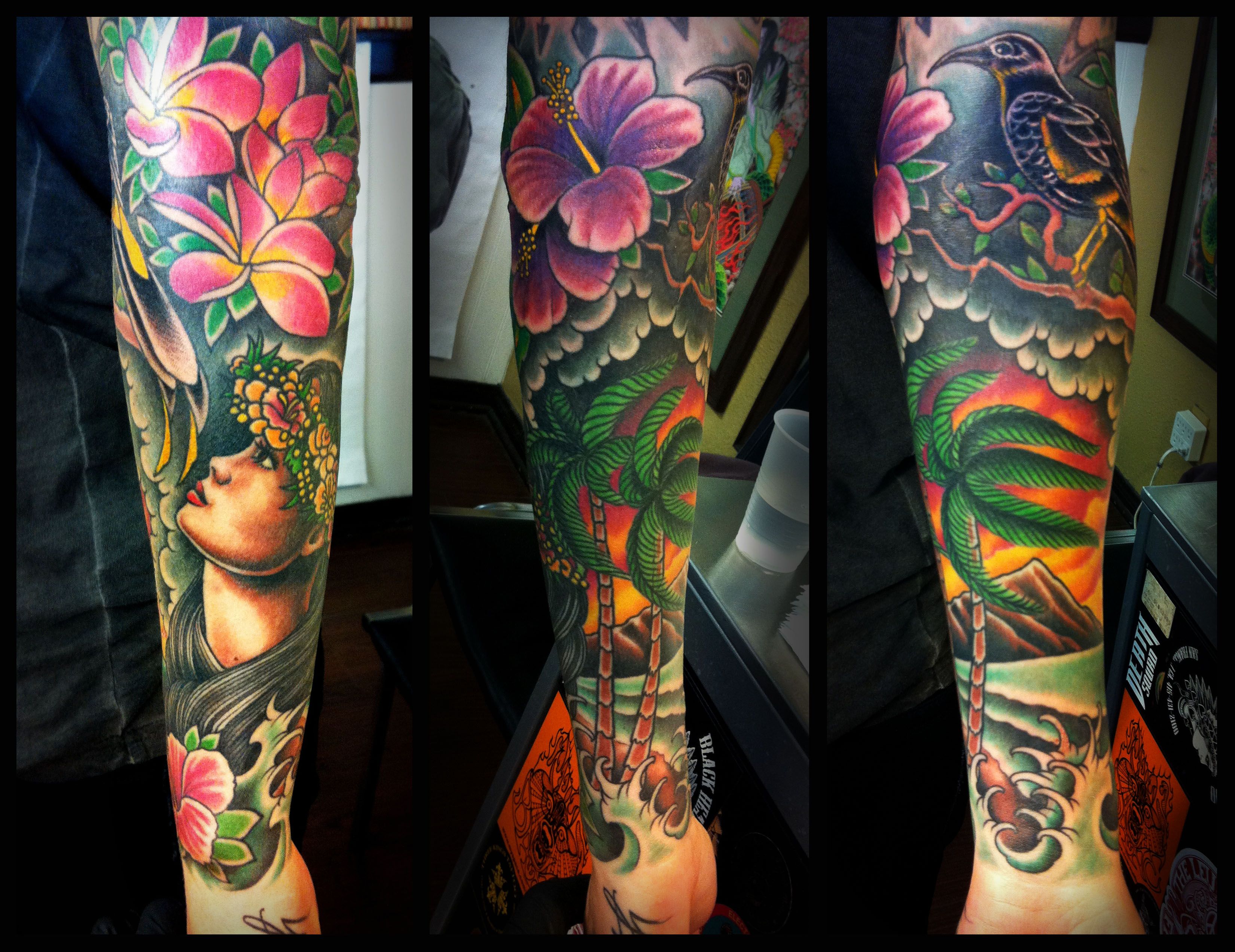Hawaiian tattoos, often referred to as tatau or kakau in the Hawaiian language, hold a rich cultural significance and have captivated the art world with their intricate designs and profound symbolism. In this comprehensive exploration, we delve into the ancient origins, cultural importance, and contemporary resurgence of Hawaiian tattoos, uncovering the stories they tell and the meanings they hold.
The Ancient Origins of Hawaiian Tattoos

The practice of tattooing in Hawaii dates back centuries, rooted in ancient Polynesian traditions. It is believed that the first Polynesian settlers brought the art of tattooing with them when they migrated to Hawaii, establishing a deep-rooted cultural practice that has endured through the ages.
In Hawaiian culture, tattoos were not merely decorative; they served as a means of storytelling, cultural identification, and personal expression. Each tattoo design, meticulously crafted with precise lines and symbolic motifs, held a unique narrative, often reflecting the wearer's genealogy, achievements, social status, or spiritual beliefs.
The process of receiving a Hawaiian tattoo was a sacred rite of passage. It involved intricate rituals and ceremonies, with the tattoo artist, known as a kākau, holding a revered position within the community. The art of tattooing was passed down through generations, with each artist adding their own unique style and interpretation to the ancient designs.
Traditional Hawaiian Tattoo Tools and Techniques
Traditional Hawaiian tattooing utilized simple yet effective tools. The kākau would employ a set of small combs made from bone, shell, or wood, which were dipped into a pigment made from burnt candlenut mixed with water. These combs were then used to puncture the skin, creating the distinctive bold lines and intricate patterns that characterize Hawaiian tattoos.
The process was painstakingly slow and often painful, but it was an integral part of Hawaiian culture, with tattoos serving as a form of cultural preservation and personal adornment. The placement and design of tattoos were carefully considered, with different areas of the body representing different aspects of life, nature, and spirituality.
| Body Part | Symbolism |
|---|---|
| Arms | Strength and protection |
| Hands | Blessings and good fortune |
| Shoulders | Leadership and responsibility |
| Legs | Stability and connection to the earth |

The Cultural Significance of Hawaiian Tattoos

Hawaiian tattoos carry profound cultural significance, serving as a visual language that communicates the wearer’s identity, heritage, and personal journey. They are a testament to the rich cultural tapestry of Hawaii, preserving ancient traditions and storytelling in a unique and enduring way.
Symbolism and Motifs in Hawaiian Tattoo Art
Hawaiian tattoo designs are renowned for their intricate symbolism and meaningful motifs. Each design element holds a specific representation, often inspired by the natural world and Hawaiian mythology. Some common motifs include:
- Tiki: The iconic tiki figure represents the first man and is a symbol of creation and protection.
- Honu (Turtle): The honu embodies longevity, wisdom, and good luck. It is a revered symbol in Hawaiian culture.
- Lehua Blossom: This vibrant flower, native to Hawaii, symbolizes love, passion, and the soul's journey.
- Ocean Waves: Waves represent the ebb and flow of life, resilience, and the power of nature.
- Hawaiian Birds: Birds, such as the albatross and the Hawaiian owl, symbolize freedom, guidance, and spiritual connection.
These motifs, when combined in a tattoo design, create a unique narrative, reflecting the wearer's connection to Hawaii's rich cultural heritage and their personal journey through life.
Tattoos as a Form of Cultural Preservation
In a broader context, Hawaiian tattoos play a vital role in preserving and promoting Hawaiian culture. They serve as a living archive, passing down ancient traditions and knowledge from generation to generation. The intricate designs and symbolic meanings embedded in tattoos help to maintain a connection to Hawaii’s indigenous past and ensure that its rich cultural heritage remains alive and celebrated.
The Modern Resurgence of Hawaiian Tattoos
In recent years, there has been a notable resurgence in the popularity of Hawaiian tattoos, both within the Hawaiian community and among tattoo enthusiasts worldwide. This resurgence is driven by a growing appreciation for indigenous art forms and a desire to reconnect with cultural roots.
Hawaiian Tattoo Artists and Their Impact
A new generation of Hawaiian tattoo artists has emerged, blending traditional techniques with contemporary styles. These artists, deeply rooted in their cultural heritage, are bringing a fresh perspective to Hawaiian tattoo art, attracting a diverse range of clients and ensuring the continued evolution of this ancient practice.
One such artist is Kala Kauanoe, a renowned Hawaiian tattooist based in Honolulu. Kala's work is a beautiful fusion of traditional Hawaiian motifs and modern aesthetics, capturing the essence of Hawaii's rich cultural tapestry. His tattoos are highly sought after, not only for their stunning visual appeal but also for the deep respect and cultural significance they embody.
Another notable artist is Koa Kahiwa, whose work showcases a unique interpretation of Hawaiian tattoo art. Koa's designs often incorporate elements of nature, such as tropical flowers and ocean waves, alongside traditional Hawaiian symbols, creating a modern yet deeply rooted aesthetic.
The Impact of Hawaiian Tattoos on Pop Culture
The resurgence of Hawaiian tattoos has also had a significant impact on popular culture. From celebrity endorsements to high-profile media appearances, Hawaiian tattoos have gained widespread recognition and appreciation. This increased visibility has sparked a renewed interest in Hawaiian culture and its rich artistic traditions.
Additionally, the growing popularity of Hawaiian tattoos has contributed to a wider appreciation for indigenous art forms. It has sparked conversations about cultural appropriation and the importance of respecting and honoring the cultural heritage embedded in these ancient art practices.
The Future of Hawaiian Tattoos
As Hawaiian tattoos continue to gain prominence and appreciation, their future looks bright. The deep cultural significance and intricate symbolism embedded in these tattoos ensure their enduring appeal, both within Hawaii and around the world.
Preserving Cultural Integrity in Tattoo Art
One of the key challenges moving forward is ensuring that the cultural integrity of Hawaiian tattoo art is preserved. With its growing popularity, there is a risk of cultural appropriation and the misuse or misrepresentation of Hawaiian symbols and motifs.
To address this, many Hawaiian tattoo artists and cultural organizations are actively engaged in education and outreach efforts. They aim to promote a deeper understanding of Hawaiian culture and its art forms, ensuring that those who choose to adorn themselves with Hawaiian tattoos do so with respect and cultural awareness.
The Evolution of Hawaiian Tattoo Styles
While preserving cultural integrity is paramount, the future of Hawaiian tattoos also holds exciting possibilities for artistic evolution. As new generations of artists emerge, they will undoubtedly bring fresh perspectives and innovative techniques, pushing the boundaries of Hawaiian tattoo art while staying true to its rich cultural heritage.
This evolution will likely see a continued fusion of traditional and contemporary styles, with artists exploring new mediums, colors, and design elements while maintaining the symbolic richness and cultural significance that define Hawaiian tattoos.
The Role of Technology in Hawaiian Tattoo Art
Advancements in technology are also expected to play a role in the future of Hawaiian tattoo art. Digital tools and platforms are already being utilized by artists to refine their designs, explore new possibilities, and connect with a global audience. Social media, in particular, has been a powerful platform for showcasing Hawaiian tattoos and sharing their cultural significance with a wide audience.
However, it is essential to strike a balance between embracing technological advancements and preserving the traditional aspects of Hawaiian tattoo art. The unique process and sacred rituals associated with traditional tattooing should remain at the heart of this ancient practice, ensuring that Hawaiian tattoos continue to carry the weight of their cultural heritage and personal significance.
Conclusion

Hawaiian tattoos are a testament to the enduring power of cultural traditions and the profound impact they can have on personal identity and artistic expression. From their ancient origins to their modern resurgence, Hawaiian tattoos have captivated and inspired people worldwide.
As we look to the future, it is clear that Hawaiian tattoos will continue to thrive, evolving with the times while remaining deeply rooted in their cultural heritage. The stories they tell, the meanings they hold, and the cultural significance they embody ensure that Hawaiian tattoos will remain a cherished art form for generations to come.
What are the common motifs and symbols used in Hawaiian tattoos?
+Hawaiian tattoos often feature a variety of motifs and symbols, each with its own unique meaning. Common motifs include the tiki (representing creation and protection), the honu or turtle (symbolizing longevity and wisdom), lehua blossoms (representing love and passion), ocean waves (signifying resilience and the power of nature), and Hawaiian birds (such as the albatross and owl, symbolizing freedom and spiritual connection). These symbols, when combined, create a rich tapestry of meaning and personal expression.
How can I ensure I’m respecting Hawaiian culture when getting a Hawaiian tattoo?
+When considering a Hawaiian tattoo, it’s important to approach the process with respect and cultural awareness. Research and understand the symbolism and cultural significance behind the designs you’re drawn to. Consider seeking out a reputable Hawaiian tattoo artist who can guide you in choosing a design that aligns with your personal journey and respects Hawaiian cultural traditions. Additionally, be mindful of cultural appropriation and avoid using Hawaiian symbols or motifs without understanding their cultural context.
What are some famous examples of Hawaiian tattoos in popular culture?
+Hawaiian tattoos have gained widespread recognition and popularity in recent years, with several notable examples in popular culture. One famous example is the tattoo of Dwayne Johnson (The Rock), who proudly displays a Hawaiian tattoo sleeve featuring traditional motifs and symbols. Another well-known tattoo is that of actress and model Michelle Rodriguez, who sports a tiki tattoo on her shoulder, paying homage to her Hawaiian heritage.